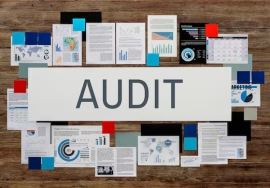
The Ultimate Guide to Managing Business Expenses and Cash Flow
For every business, big or small, managing expenses and maintaining healthy cash flow isn’t just a financial task, it’s a survival strategy. Cash is the lifeblood of any company, and even a profitable business can run into trouble without proper control over its finances. In this ultimate guide, we’ll explore how to effectively manage business expenses and optimize cash flow, ensuring your business remains resilient, agile, and growth-ready.
1. Understand the Cash Flow Cycle
The cash flow cycle begins when you spend money to produce a product or deliver a service, and it ends when you collect payment from customers. Mapping this cycle helps you identify where cash bottlenecks occur.
Action Tip: Create a visual cash flow timeline. Track when expenses are incurred and when income is expected. Tools like QuickBooks or Xero can simplify this.
2. Categorize and Prioritize Business Expenses
Start by dividing your expenses into:
- Fixed expenses (e.g., rent, salaries, insurance)
- Variable expenses (e.g., utilities, raw materials)
- One-time costs (e.g., equipment purchases)
Prioritize expenses based on necessity and ROI. Not every cost adds value, trim the excess.
Action Tip: Perform a quarterly expense audit. Ask: “Is this expense essential? Can it be reduced or eliminated?”
3. Set a Realistic and Flexible Budget
A well-structured budget is your financial compass. It should reflect both your short-term operational needs and long-term goals. Include a buffer for unexpected costs.
Action Tip: Use a zero-based budgeting method to allocate funds based on actual needs rather than historical spending.
4. Track Spending in Real-Time
Real-time expense tracking helps prevent overspending and identifies patterns early. It also supports accountability within teams.
Action Tip: Invest in an expense management software like Expensify, Zoho Expense, or SAP Concur. Automate receipts and approvals.
5. Optimize Accounts Payable and Receivable
Delays in receivables can dry up your cash reserves, while slow payables can damage supplier relationships.
- Accelerate receivables: Offer discounts for early payments, send automated reminders, and simplify payment processes.
- Strategize payables: Negotiate better terms and avoid late payment penalties.
Action Tip: Regularly reconcile accounts and monitor aging reports.
6. Separate Business and Personal Finances
Mixing finances leads to confusion, tax complications, and poor decision-making. Keep separate bank accounts and credit cards for business purposes.
Action Tip: Set up a business checking account and link it to your accounting software.
7. Create a Cash Reserve
A cash reserve acts as your financial cushion during downturns or slow seasons. Aim to save at least 3–6 months of operating expenses.
Action Tip: Automate transfers to a high-yield business savings account.
8. Review and Adjust Regularly
Markets change, and so should your financial strategies. Review your cash flow and expenses monthly. Be proactive, not reactive.
Action Tip: Schedule monthly financial reviews and include key team members for cross-functional input.
9. Leverage Technology and Financial Tools
There are numerous digital tools that can streamline your cash flow management:
- Forecasting tools: Float, Pulse, or PlanGuru
- Reporting tools: Microsoft Power BI, Tableau
- Cloud-based accounting: FreshBooks, Wave
Action Tip: Choose tools that integrate seamlessly with your existing systems for better efficiency.
10. Seek Professional Insight
Sometimes, a fresh pair of expert eyes can make all the difference. Financial consultants or accountants can help identify blind spots and offer tailored solutions.
Action Tip: Schedule annual reviews with a financial advisor or accountant to optimize tax and cash flow planning.







